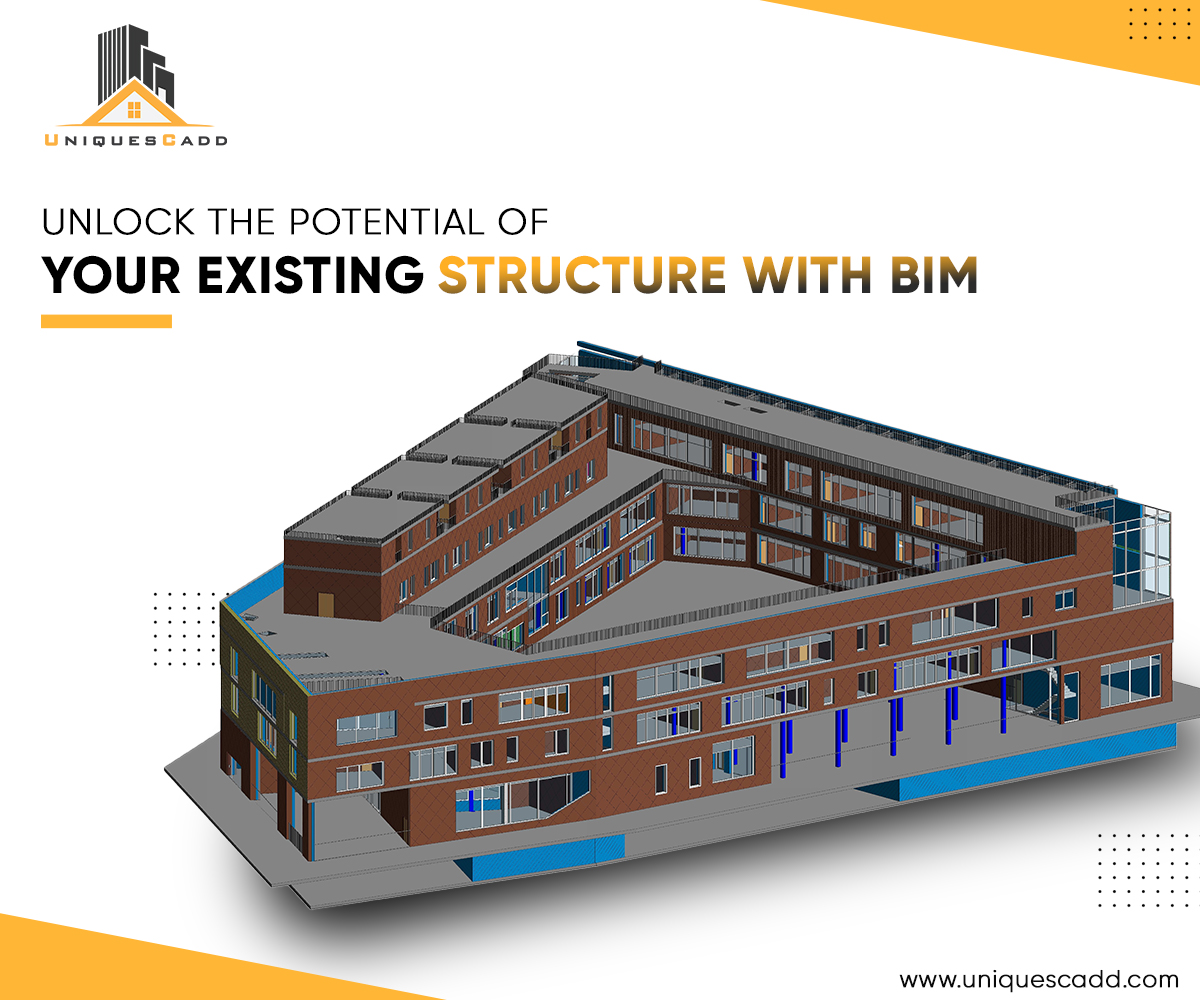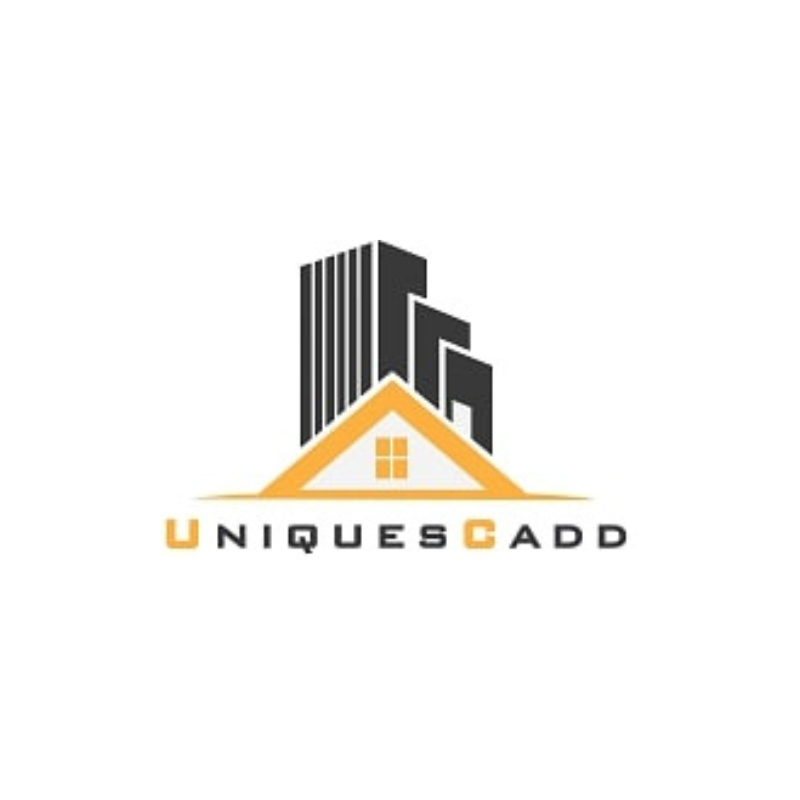Unlock the Potential of Your Existing Structure with BIM.
Existing Structure with BIM

Building Information Modeling (BIM) has transformed how new structures are designed, built, and managed. However, what about the existing structure? Can BIM be used to enhance the performance of older buildings? In recent years, BIM has emerged as a robust process to manage the entire lifecycle of facilities, including retrofitting and refurbishing existing structures.
This article will explore the benefits and challenges of using BIM for existing building structures.
What is BIM?
First, let's briefly discuss what BIM is. BIM is a process that involves creating a digital model of a building that can be used to manage information about that building throughout its lifecycle. This model contains information about the building's design, construction, and maintenance and can be shared among all stakeholders involved in the project, from architects and engineers to contractors and building owners.
BIM for Existing Structures
BIM implementation for existing buildings has enormous operational and maintenance possibilities. However, the usefulness of BIM has not been fully understood yet. This is because most buildings do not have a BIM, and establishing a BIM for an existing building is difficult. BIM can be advantageous in various ways, including life cycle analysis for better facility management, sustainable and efficient energy use, cost-effective retrofit decision-making, maintenance activities, and orderly demolition; nevertheless, realizing these benefits meets significant hurdles.
Capturing Data About Performance
Another way BIM can be used for existing structures is to capture data about the building's performance over time. This can include information about energy usage, maintenance and repair history, occupancy patterns, and other factors impacting the building's efficiency and lifespan.
This section covers collecting the data required to produce a BIM (as built). Setting the required Level of Detail (LoD) is critical since it determines all subsequent phases, from selecting a data-gathering technique to modeling. Non-contact data collecting methods are classified as image-based, range-based, combination, or other. Manual data collecting methods primarily extract spatial information, whereas RFID tags or bar code tags are rarely relevant to existing buildings. Cost, duration, necessary LoD, and environmental conditions are the most important factors when selecting a data-gathering method. Semi-automatic laser scanning with total stations is a frequent technology used in practice, although it has drawbacks such as high equipment costs and fragility, as well as scanning challenges.
By capturing this data, building owners and managers can identify areas where the building is underperforming and make targeted improvements to enhance its energy efficiency, reduce operating costs, and extend its lifespan. This information can also be used to priorities maintenance and repair activities, which can help reduce downtime and improve the building's overall performance.
Data processing
Because future BIM functions dictate the required level of detail (LoD) and the manner of data collection, functionality influences the amount of data received, processing, and the time and effort required for this process. Processing previously collected building data ensures that objects vital to functionality are detected, for example, to detect flaws for maintenance purposes.
At the data processing stage, point clouds are obtained using image-based, and range-based-techniques are registered, aligned, and combined in a single coordinate system. The data is cleared of noise, unnecessary information, and clutter], and often the number of points is reduced. Data obtained using other methods are processed according to their data format, required functionality, and object recognition method.
Object recognition
Identifying an object, extracting information, and handling and removing clutter are all part of object recognition. Data-driven approaches extract information about buildings from acquired and processed data and can be classified based on attributes, shape, materials, and statistical comparison. Model-based techniques are based on geometric objects' spatial and structural features and their relationships. Tags or manual identification are also used. Recognition rates for simple and flat building components range from 89% to 93% in short scenes with one or more rooms.
Detailed information regarding technical equipment, the length of the air duct, installation, layers of materials, connections, and components is required for BIM to give the function operation and maintenance.
Modeling
Modeling is constructing BIM objects representing and holding information about building components. Although automated BIM modeling is in its early stages, it does not consider the qualities of the details or the information they contain. Hidden architectural parts like electrical cables, air ducts, and pipelines can only be modeled through many human operations.
Modeling software includes Autodesk Revit and Navisworks, Bentley Architecture, Graphisoft ArchiCAD, Tekla, and Nemetschek Allplan. These techniques, however, are far from fully automated or semi-automated BIM modeling of existing buildings.
Benefits of BIM for Existing Structures
There are many benefits of using BIM for existing structures. Here are a few of the most significant:
Enhanced Efficiency: By creating a 3D model of existing construction, architects and engineers can test different design options and identify potential issues before making changes to the building. This can reduce the time and resources required for the retrofitting process.
Improved Energy Efficiency: Capturing data about a building's performance over time can help identify areas where the building is underperforming and make targeted improvements to enhance its energy efficiency, reducing energy consumption and operating costs.
Reduced Operating Costs: By identifying areas where the building is underperforming and prioritizing maintenance and repair activities, building owners can reduce downtime and improve the building's overall performance, resulting in reduced operating costs.
Improved Occupant Comfort: BIM can be used to optimize the layout of an existing structure, improving occupant comfort by ensuring that spaces are well-lit, well-ventilated, and comfortable.
Increased Lifespan: By identifying potential issues early and making targeted improvements, building owners can extend the lifespan of an existing structure; conclusion
Despite the rising use of BIM in new buildings, BIM deployment in older buildings still needs to be improved. The automation of data capture and BIM production (without pre-existing BIM), as well as the update and maintenance of information in BIM, are significant problems. There is a lot of research potential in developing economical and automatic BIM for existing buildings.
High LoD for maintenance is incompatible with present time and cost restrictions. Object properties relating to service functions are still under development. Further study into automated data collection, processing, and modeling has the potential to minimize the cost of building audits while increasing the productivity of BIM-based maintenance.
Source: https://www.uniquescadd.com/our-services/bim-services/












